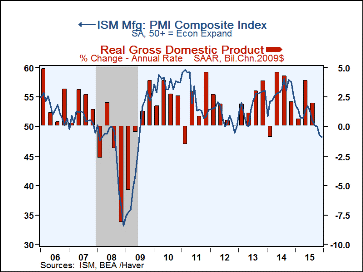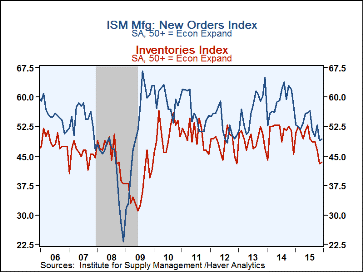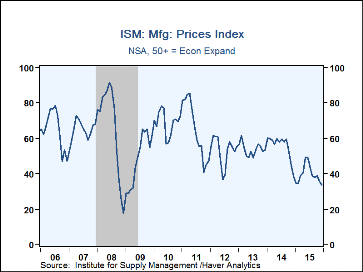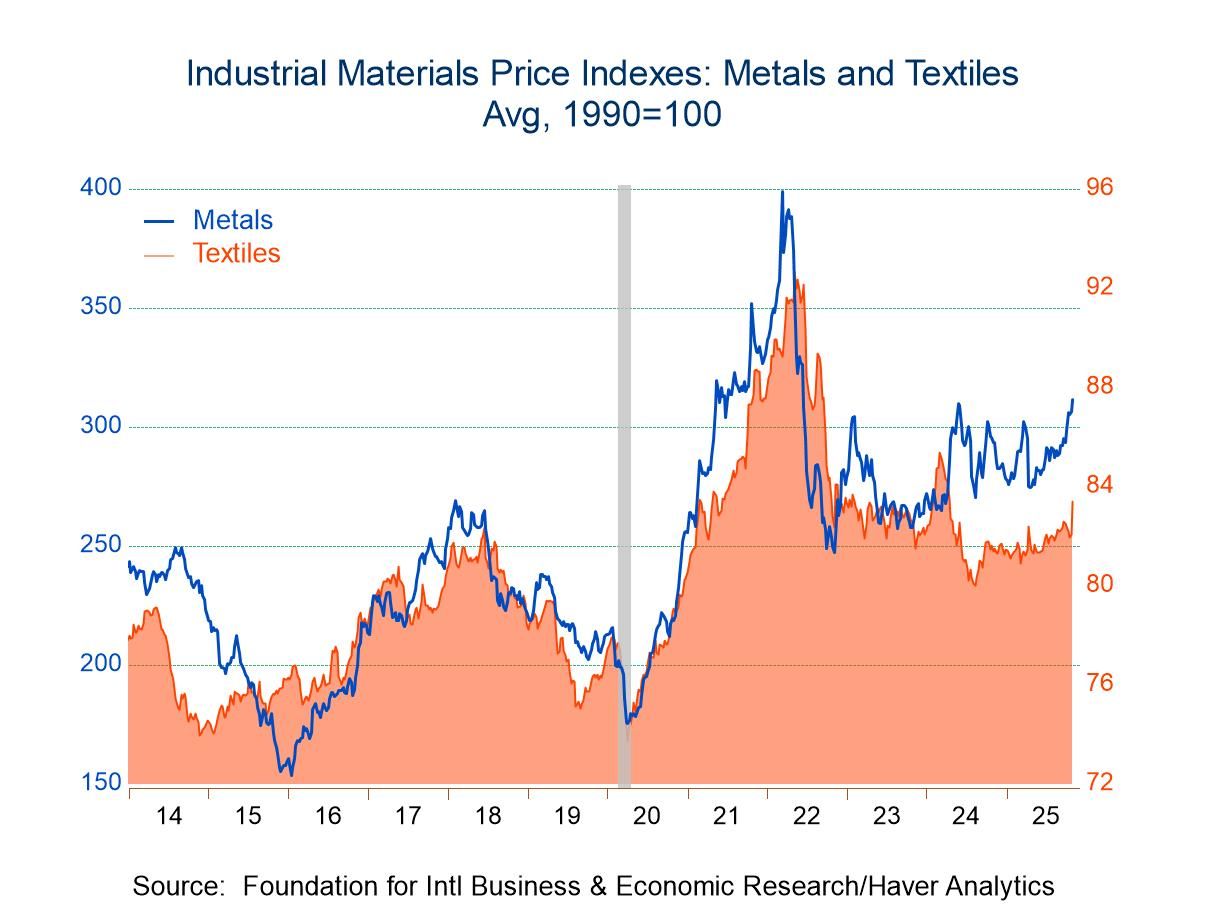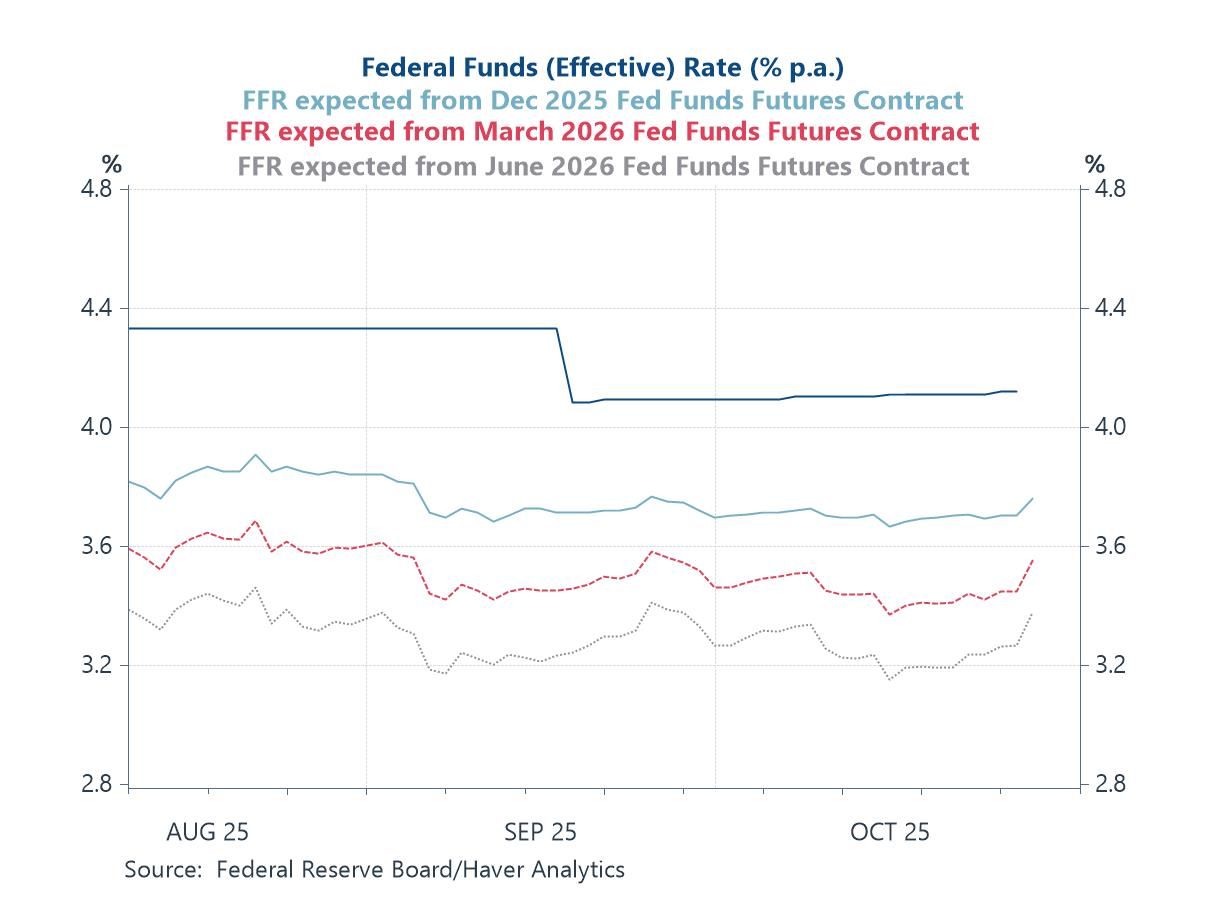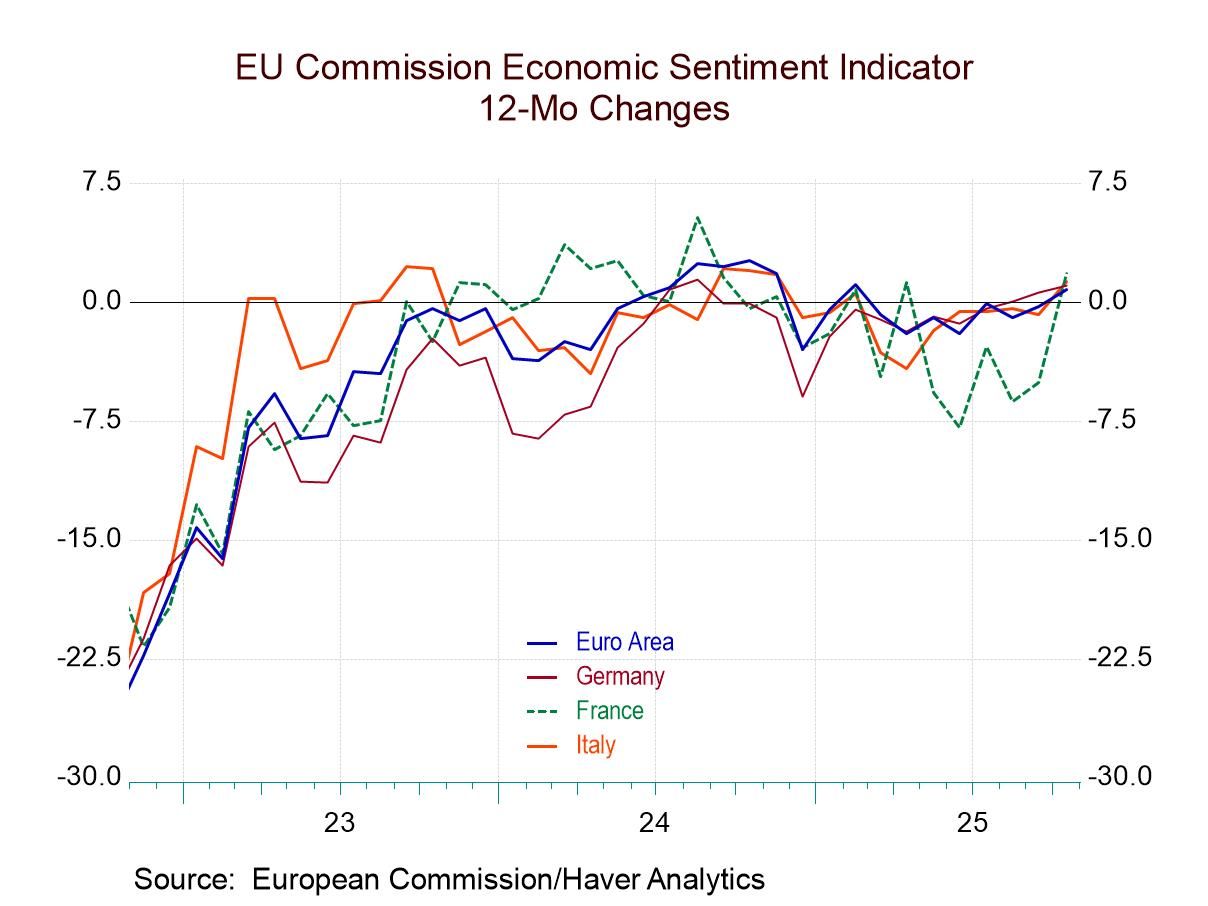 Global| Jan 11 2016
Global| Jan 11 2016U.S. ISM Factory Index Continues To Fall; Prices Decline Sharply
by:Tom Moeller
|in:Economy in Brief
Summary
The Institute for Supply Management reported that it's Composite Index of factory sector activity declined for a second consecutive month. At 48.2 during December, the figure was down from an unrevised November reading of 48.6. The [...]
The Institute for Supply Management reported that it's Composite Index of factory sector activity declined for a second consecutive month. At 48.2 during December, the figure was down from an unrevised November reading of 48.6. The latest was the lowest level since June 2009, the final month of the recession. The decline was to a level lower than had been expected (49.0) in the Action Economics Forecast Survey. For all of last year, the index averaged 51.4, the lowest level since 2009. Any figure in this diffusion index below 50 represents declining activity. During the last ten years there has been a 75% correlation between the index and the q/q change in real GDP.
The decline in the index was prompted by a fall in the employment figure to 48.1 from 51.3, its third reading below 50 in 2015. During the last ten years, there has been an 89% correlation between the index and the m/m change in manufacturing payrolls. The supplier delivery index suggested faster delivery speeds at 50.3, leaving it about where it's been for the last five months.
The other component series suggested minimal m/m improvement. Production rose to 49.8 from 49.2, but that still reflected a decline in activity at roughly the fastest rate of the economic recovery. The new orders series also improved slightly to 49.2, but remained down versus the December 2013 high of 64.9. Inventory liquidation was slower, but the series remained below 50 for the sixth straight month.
The export order index jumped m/m to 51.0, its highest level since April. It still was down, however, from 52.0 twelve months earlier. The import index fell to a six year low of 45.5 and the order backlog series also fell to a six year low.
Weaker activity led to reduced pricing power. The prices index fell to 33.5, is lowest level since April 2009. Thirty-seven percent (NSA) of respondents reported paying lower prices while 4% reported them higher.
The figures from the Institute For Supply Management (ISM) are diffusion indexes. A reading above 50 represents growth in factory sector activity. They can be found in Haver's USECON database. The expectations number is in the AS1REPNA database.
| ISM Mfg (SA) | Dec | Nov | Oct | Dec '14 | 2015 | 2014 | 2013 |
|---|---|---|---|---|---|---|---|
| Composite Index | 48.2 | 48.6 | 50.1 | 55.1 | 51.4 | 55.7 | 53.8 |
| New Orders | 49.2 | 48.9 | 52.9 | 57.8 | 52.7 | 59.0 | 56.9 |
| Production | 49.8 | 49.2 | 52.9 | 57.7 | 53.5 | 59.2 | 57.5 |
| Employment | 48.1 | 51.3 | 47.6 | 56.0 | 51.0 | 54.5 | 53.2 |
| Supplier Deliveries | 50.3 | 50.6 | 50.4 | 58.6 | 50.7 | 55.0 | 51.9 |
| Inventories | 43.5 | 43.0 | 46.5 | 45.5 | 49.0 | 50.8 | 49.4 |
| Prices Paid Index (NSA) | 33.5 | 35.5 | 39.0 | 38.5 | 39.8 | 55.6 | 53.8 |
Tom Moeller
AuthorMore in Author Profile »Prior to joining Haver Analytics in 2000, Mr. Moeller worked as the Economist at Chancellor Capital Management from 1985 to 1999. There, he developed comprehensive economic forecasts and interpreted economic data for equity and fixed income portfolio managers. Also at Chancellor, Mr. Moeller worked as an equity analyst and was responsible for researching and rating companies in the economically sensitive automobile and housing industries for investment in Chancellor’s equity portfolio. Prior to joining Chancellor, Mr. Moeller was an Economist at Citibank from 1979 to 1984. He also analyzed pricing behavior in the metals industry for the Council on Wage and Price Stability in Washington, D.C. In 1999, Mr. Moeller received the award for most accurate forecast from the Forecasters' Club of New York. From 1990 to 1992 he was President of the New York Association for Business Economists. Mr. Moeller earned an M.B.A. in Finance from Fordham University, where he graduated in 1987. He holds a Bachelor of Arts in Economics from George Washington University.


